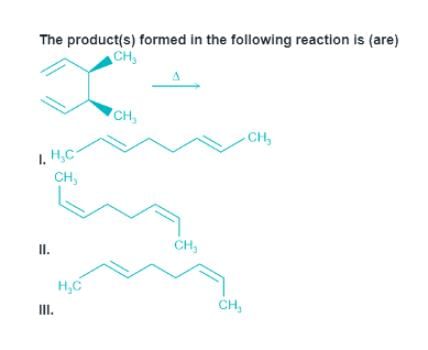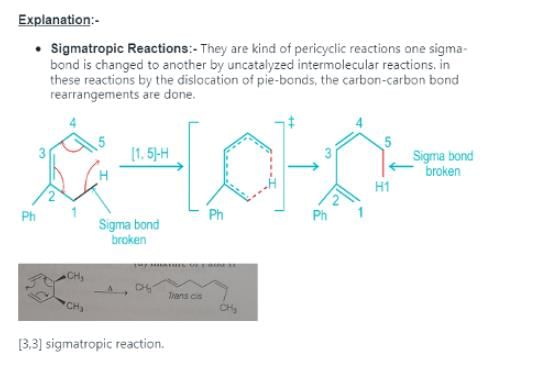Chemistry Exam > Chemistry Tests > Organic Chemistry > Test: Pericyclic Level - 1 - Chemistry MCQ
Test: Pericyclic Level - 1 - Chemistry MCQ
Test Description
20 Questions MCQ Test Organic Chemistry - Test: Pericyclic Level - 1
Test: Pericyclic Level - 1 for Chemistry 2025 is part of Organic Chemistry preparation. The Test: Pericyclic Level - 1 questions and answers have been
prepared according to the Chemistry exam syllabus.The Test: Pericyclic Level - 1 MCQs are made for Chemistry 2025 Exam. Find important
definitions, questions, notes, meanings, examples, exercises, MCQs and online tests for Test: Pericyclic Level - 1 below.
Solutions of Test: Pericyclic Level - 1 questions in English are available as part of our Organic Chemistry for Chemistry & Test: Pericyclic Level - 1 solutions in
Hindi for Organic Chemistry course. Download more important topics, notes, lectures and mock
test series for Chemistry Exam by signing up for free. Attempt Test: Pericyclic Level - 1 | 20 questions in 60 minutes | Mock test for Chemistry preparation | Free important questions MCQ to study Organic Chemistry for Chemistry Exam | Download free PDF with solutions
Detailed Solution for Test: Pericyclic Level - 1 - Question 1
Detailed Solution for Test: Pericyclic Level - 1 - Question 13
Detailed Solution for Test: Pericyclic Level - 1 - Question 16
Test: Pericyclic Level - 1 - Question 19
Which of the following dienes cannot undergo Diels-Alder reactions?
Detailed Solution for Test: Pericyclic Level - 1 - Question 19
Detailed Solution for Test: Pericyclic Level - 1 - Question 20
|
44 videos|102 docs|52 tests
|
Information about Test: Pericyclic Level - 1 Page
In this test you can find the Exam questions for Test: Pericyclic Level - 1 solved & explained in the simplest way possible.
Besides giving Questions and answers for Test: Pericyclic Level - 1, EduRev gives you an ample number of Online tests for practice

















